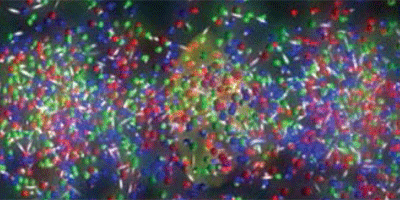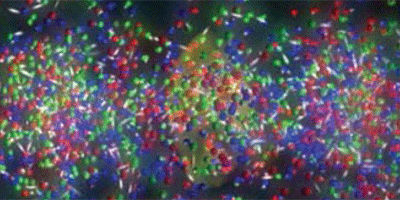Out of Bounds
Is there a limit on how viscous fluids can be? Various string-theory-based calculations predict that the ratio of a fluid’s shear viscosity to its entropy density is bounded from below by (or, ), depending on the units). So far, only highly idealized models of fluids approach this limit, but physicists are actively debating if the quark-gluon plasma, generated in relativistic heavy-ion collisions, might be an experimentally accessible example of a “perfect liquid” (See 26 October 2009 Trends).
Now, in a paper published in Physical Review Letters, Anton Rebhan and Dominik Steineder, both at the Vienna University of Technology in Austria, show that the theoretical bound on viscosity may well be violated within the idealized setup of string theory itself. Rebhan and Steineder consider the string-theory-based description of an idealized plasma with an intrinsic spatial anisotropy, and show that the bound is indeed violated, and that the amount of violation is directly related to the spatial anisotropy of the plasma. Given that the real quark-gluon plasma is produced in a highly anisotropic situation — immediately after the nuclear collisions, the resulting plasma expands predominantly along the beam axis — the implications of this theoretical finding on the physics of relativistic heavy-ion collisions is keenly awaited. The obvious challenge is to understand if any of the implications of Rebhan and Steineder’s calculations, which are based on a highly idealized model, can be extrapolated to a “real life” experimental scenario. – Abhishek Agarwal





